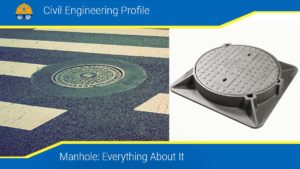The plumbing traps are devices installed at the ends of soil pipes or sullage pipes (waste pipes) to block the escape of foul sewer gas from the pipes to the outside environment. This is achieved by enclosing or maintaining a water seal (also known as a trap seal) between the pipe and the exterior, which prevents gases from escaping. The effectiveness and efficiency of a trap are determined by the depth of the water seal. The greater the depth, the more efficient the trap will be. Typically, the water seal ranges from 35mm to 75mm, with 50mm being a common depth in most traps.
Qualities of the Traps
A good trap should possess the following qualities:
- It should provide sufficient water seal (50mm- or so) with a large surface area.
- Its interior should be smooth, so as not to obstruct flow, and the trap should thus be self-cleansing.
- It should be provided with an access door for cleaning
- It should be made of some non-absorbent material.
Types of Traps Based on Shapes
Depending upon their shapes, the traps may be of three types:
- S-trap
- Q-trap
- P-trap
P-Trap
A P-trap is a type of plumbing trap used in drainage systems to prevent contaminated sewage gases from entering buildings and homes. It is called a P-trap because of its shape, which resembles the letter “P” when viewed from the side.
P-trap is typically installed under sinks, bathtubs, showers, or other plumbing fixtures that require drainage. The trap connects to a drain pipe and consists of a U-shaped bend that holds a small amount of water, creating a water seal that prevents sewage gases from flowing back into the building.
The P-trap works by using the water in the U-shaped bend to create a barrier that prevents gases from passing through. As water flows through the drain, it pushes the air ahead of it and creates a vacuum behind it. This vacuum can cause sewer gases to be drawn back up into the building if there is no barrier in place. However, because the P-trap contains water, it prevents this from happening by creating a physical barrier that blocks the gases from passing through.
P-traps are a crucial component of plumbing systems, as they help to prevent unpleasant odours and potential health hazards associated with sewer gases. They are typically made of PVC, ABS (Acrylonitrile Butadiene Styrene), or cast iron and are available in various sizes to fit different plumbing fixtures. Regular maintenance of P-traps, such as cleaning and ensuring proper water levels, can help to ensure that they continue to function effectively.
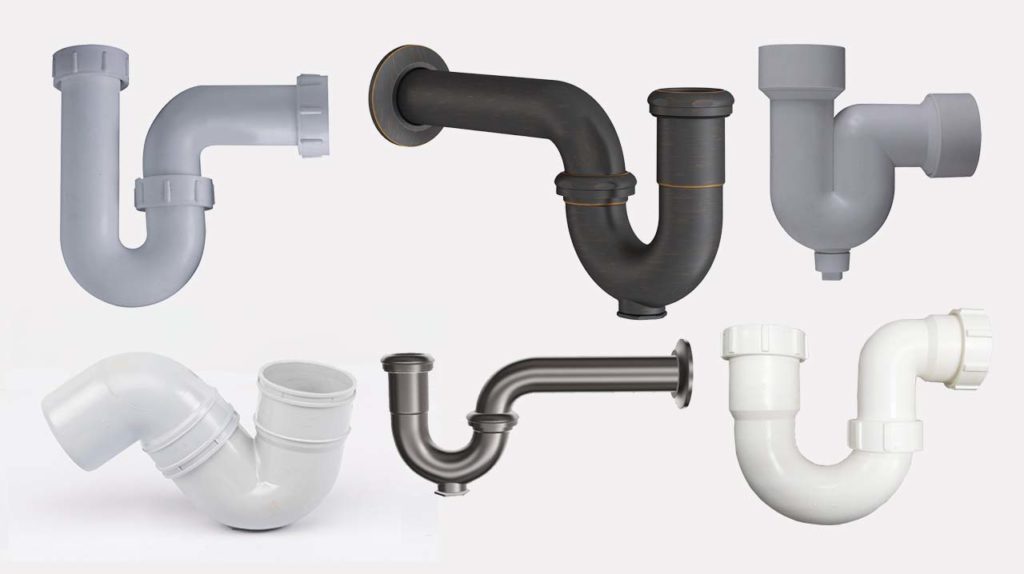
Q-Trap
A Q-trap is a type of plumbing trap that is a combination of P- and S-trap. It is used in drainage systems to prevent sewer gases from entering the building or home. Q-traps are suitable for use on the upper floor rather than the ground floor. It can be used on the ground floor where the floor level is elevated from the ground level.
Q-trap is used under the water closet, sinks, bathtubs, etc.
S-Trap
An S-trap is a type of plumbing trap that is used in drainage systems to prevent sewer gases from entering a building or home. It is called an S-trap because of its shape, which resembles the letter “S” when viewed from the side.
An S-trap works in the same way as a P-trap by creating a seal that prevents sewer gases from flowing back into the building. However, S-traps are less common than P-traps and are generally not allowed by modern plumbing codes, as they have been found to be more prone to siphoning than P-traps.
The basic design of an S-trap is similar to that of a P-trap, consisting of a U-shaped bend that holds water to create a barrier against sewer gases. However, instead of connecting directly to the drain pipe, an S-trap bends downward and connects to a horizontal drain pipe at a lower point. This configuration can cause the trap to siphon water out of the trap, breaking the seal and allowing sewer gases to enter the building.
In modern plumbing systems, P-traps are generally preferred over S-traps as they are more effective at preventing siphoning and ensuring that the trap maintains a water seal. However, in some cases, an S-trap may still be used if it is properly vented and installed to meet local plumbing codes and regulations.
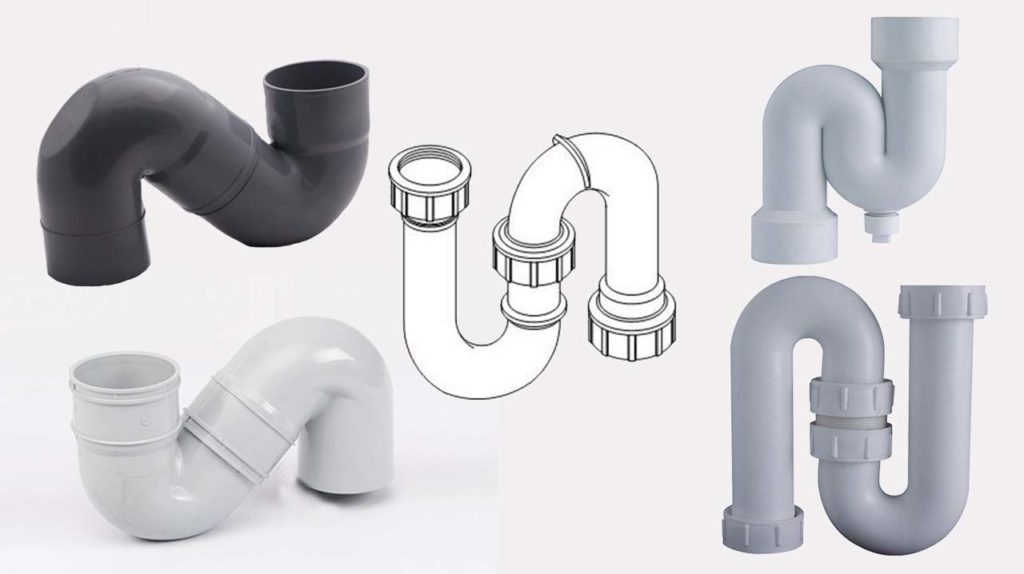
Also, read: What is the difference between S-trap and P-trap?
Types of Traps Based on Uses
Depending upon their uses, the traps may again be of three types:
- Floor trap
- Gully trap
- Intercepting trap
- Silt trap
Floor Traps:
Floor traps are generally used to admit wastewater (sullage) from the floors of rooms, kitchens, baths, etc. into the said room drain pipe. These are invariably provided with cast iron or galvanised or stainless steel grating at the top, to prevent the entry of solid and larger sticky matter, into the drainpipe, to avoid frequent blockage. A commonly used patented name for such a trap is Nahni trap.
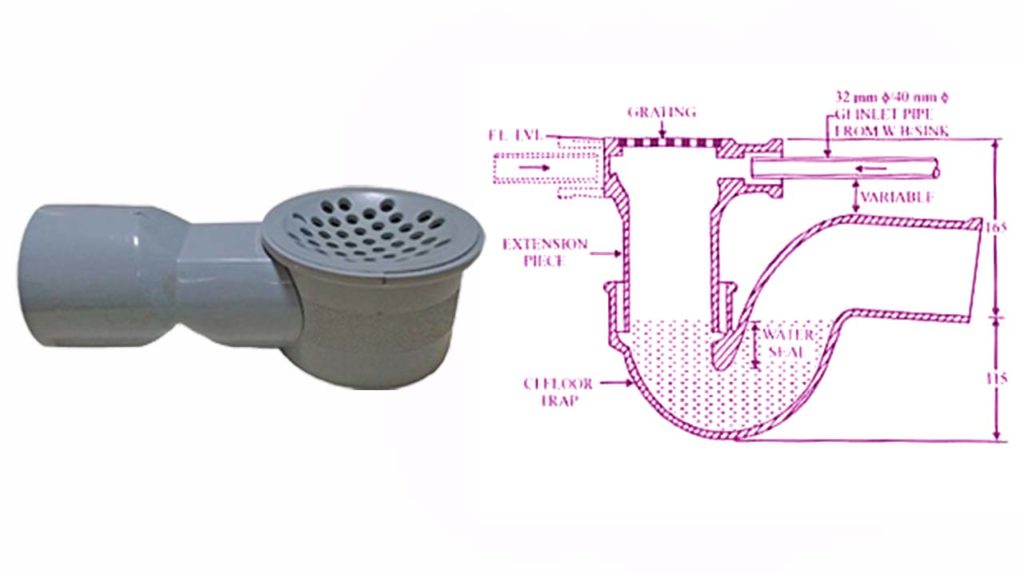
Gully Traps:
A gully trap is often provided at the junction of the room or a roof drain and the other drain coming from the bath, kitchen, etc. The foul sullage from baths will enter through the side inlet (called block inlet), and the uniform room washings or rainwater from the roof or courtyard will enter from the top.
The rainwater pipes or sullage pipes discharge into drains and are often connected to them through such traps. Gully traps may either have an S-trap or a P-trap. The water seal is usually 50mm to 75mm deep. The top of the trap is covered by C.I. grating to exclude the entry of coarser materials to avoid blockage.
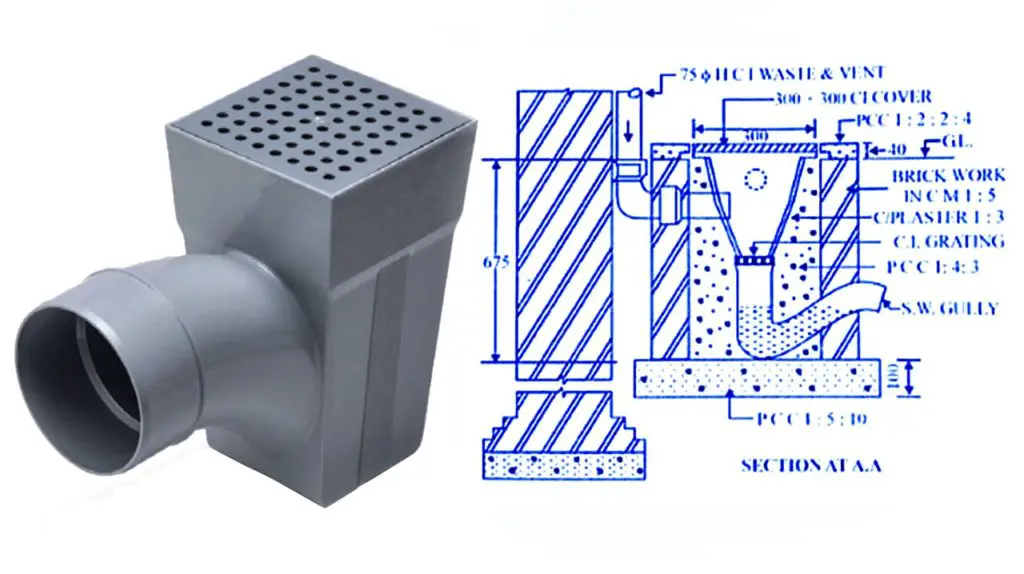
Intercepting Traps:
Intercepting traps are provided at the junction of a house sewer and a municipal sewer, to prevent the entry of foul gases into the municipal sewer into the house drainage system. This trap at such a junction is often provided in a small manhole constructed just near the house, either outside in the street or in a corner inside the house boundary. This trap is provided near its top with an access gate or a plug, called a cleaning eye, for removing silted matter from inside the trap in case of blockage.

Also, read: Manhole: The Ultimate Guide About It
Silt Traps:
If the water carries a lot of coarse particles of silt, sand etc., it is better to remove these before entering into the building drain. The silt particles normally enter the drain because of their use in washing utensils. A silt trap is similar to a grid chamber.
Also, read: Advantages And Disadvantages Of Septic Tanks
![]()






